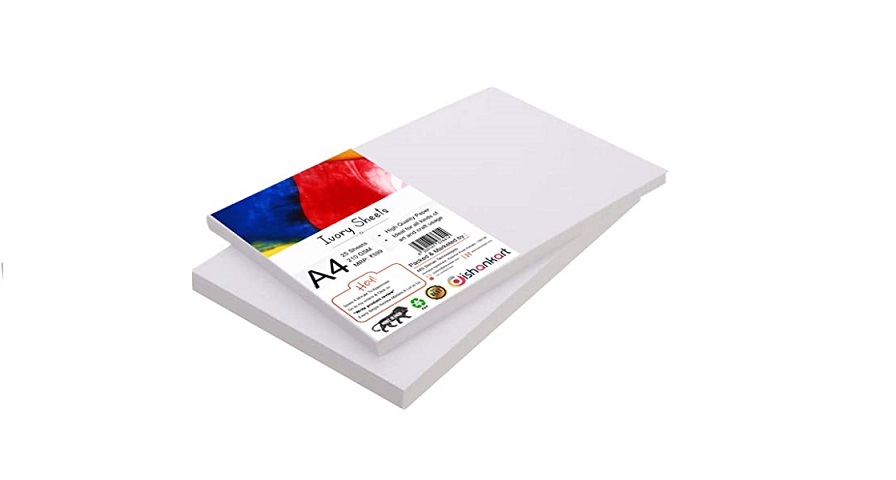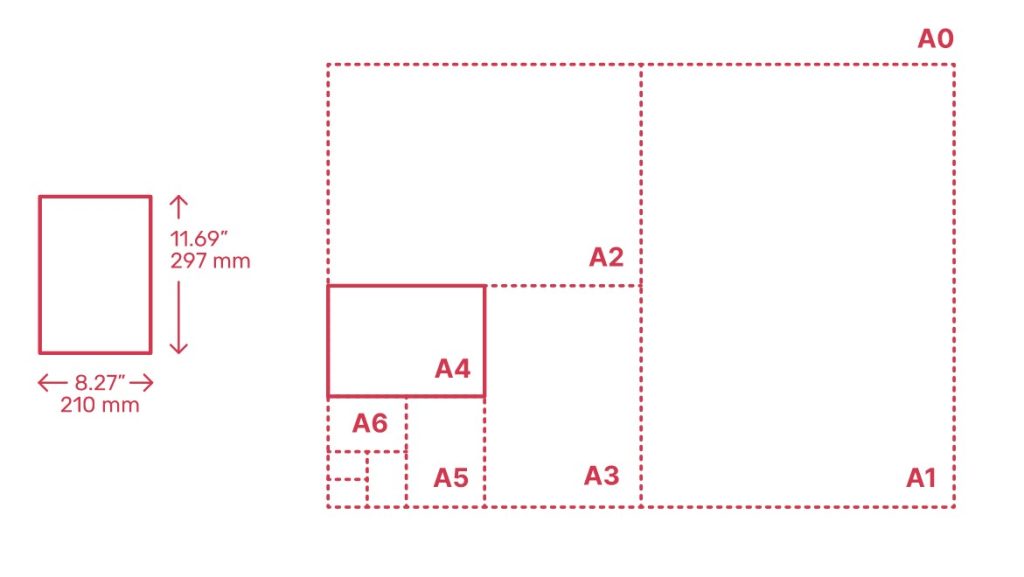
www.A4PaperSize.org provide measurements and dimensions of current A4 paper measurements in countries such as the UK, Australia, India, Singapore, Germany, Europe and the USA.
We strive to keep our visitors up to date with the latest dimensions of A4 size paper. www.A4PaperSize.org shows the A4 sheet dimensions in centimetres, inches, millimetres and pixels for Photoshop.
To get started in finding the A4 paper dimensions you’re looking for, click one of the four options listed below. Visit our articles page to learn How Paper is Made and The History of Paper.
A4 Paper Size in MM, CM, Inches and Pixels
| PAPER SIZE | DIMENSIONS IN MILLIMETERS (MM) | DIMENSIONS IN CENTIMETERS (CM) | DIMENSIONS IN INCHES (IN) | DIMENSIONS IN PIXELS (PX) AT 300 DPI* |
|---|---|---|---|---|
| A4 | 210 x 297 | 21.0 x 29.7 | 8.3 x 11.7 | 2480 x 3508 |
*Please note that pixel dimensions can vary based on the dots per inch (DPI) of the image. The pixel dimensions provided here are calculated assuming a resolution of 300 DPI, which is a common standard for high-quality print jobs. For digital or web use, you might use a lower DPI (such as 72 or 96), which would result in fewer pixels for the same physical dimensions.
Letter Size Paper Vs A4 Size Paper

Letter size paper remains in North American countries, where most of the world uses A4 paper dimensions. The size of A4 sheet is half the size of an A3 sheet, and twice the dimensions of A5 sheet. The dimensions of Letter on the other hand, doesn’t have any mathematics dimensions that can be compared to different size imperial paper easily.
Metric A4 Size:
- 210 x 297 millimeters
- 21 x 29.7 centimetres
- 0.21 x 0.297 meters
Imperial A4 Size:
- 8.267 x 11.692 inches
- 0.688 x 0.974 feet
- 0.229 x 0.324 yards
Metric Letter Dimensions:
- 215.9 x 279.4 millimeters
- 21.59 x 27.94 centimetres
- 0.216 x 0.2794 meters
Imperial Letter Dimensions:
- 8.5 x 11 inches
- 0.708 x 0.916 feet
- 0.236 x 0.305 yards
FAQ on A4 Size Paper
When Did A4 Size Become A Standard – ISO 216
A4 paper became a standard in the late 1970’s. However, even though the ISO 216 standards were introduced in the early 20th century, it took more than 50 years for these paper dimensions to be recognised world wide. The standard is now used in the UK, India, Singapore, Germany, Europe, Japan and most other countries.
Which Countries Use A4 Paper
Today, A4 is used by most countries around the world. With the exception of the USA and Canada. Many South American countries such as Mexico, Costa Rica, Chile, Venezuela and more, have officially taken on the A4 sheet dimensions standard. However, the most common page size in these countries is still ‘Letter Size’, along with other imperial page sizes.
When To Use A4 Size
A4 size is the most common paper standard in the world. It it used for everyday tasks like to-do lists, printing information from a computer, schedules and many other daily tasks. The A4’s size allows you to fit it inside a C4 envelope.
Who Invented Paper Standards
In the 1920’s, Dr Porstmann of Germany published a document proposing a standard for sheet dimensions that would later change the world. Dr Porstmann’s theory quickly became DIN approved, which is a standard in Germany meaning ‘Deutsches Institut for Normung’. In English, DIN translates as ‘German Institute for Standardisation’. A4 size is now under the international standard of ISO 216.
Why Standard Paper Dimensions Were Invented
Paper standards were introduced to make life easier for publishers in the 1700’s. Different sizes mean different size envelopes, different letter boxes and unbalanced sheet stacks. If paper was never standardised today, it would be a lot more expensive. We would need different dimension fax machines, printers, in and out trays, etc.
A4 Paper Size
II. History of A4 Paper Size
The A4 paper size originated from the German DIN 476 standard back in the early 20th century, which later evolved into the ISO 216 standard. The unique aspect ratio of A4, 1:√2, was chosen due to its unique property that when cut or folded in half widthwise, the halves also have the same aspect ratio. This standard has been adopted worldwide due to its practicality and convenience.
III. Understanding the A4 Paper Size
A4’s dimensions of 210 by 297 millimeters make it slightly longer and narrower than the US Letter size, which measures 216 by 279 millimeters. This subtle difference can have significant impacts, particularly in the digital world. When scanning, printing, or designing digital layouts, using the correct paper size setting ensures proper alignment and minimizes wastage.
IV. Versatility of A4 Paper Size
The versatility of A4 paper cannot be overstated. In professional settings, it’s used for a range of documents, from contracts to memos, reports, and more. In personal and educational contexts, it’s ideal for crafts, artwork, school projects, and more.
V. Maximizing the Use of A4 Paper in the Office
However, the efficient use of A4 paper goes beyond choosing the right type of paper. It also involves optimizing document design. Correct text formatting, appropriate use of graphics, and suitable margins and spacing can ensure that the document is readable while maximizing space.
In addition to design, offices can strategize for efficient paper use. Duplex printing, for example, allows printing on both sides of the paper, effectively halving the number of pages used. Similarly, implementing paper-saving office policies, such as encouraging digital sharing over physical copies, can dramatically reduce paper consumption.
The use of A4 paper also has a crucial role in sustainable office practices. By consciously reducing paper waste and recycling used paper, businesses can minimize their environmental footprint.
VI. Choosing the Right A4 Paper for Your Needs
When selecting A4 paper, consider factors such as weight, brightness, and finish. Each of these factors can impact the print quality and the suitability of the paper for specific uses. For example, heavier paper with a high brightness and a matte finish might be perfect for formal reports, while a lighter, less bright paper could be more than sufficient for internal documents.
VII. The Future of A4 Paper Size
The digital transformation has had a profound impact on paper usage. More and more offices are moving towards paperless operations, fueled by sustainability initiatives and advancements in technology. However, the need for physical documents remains, and the A4 paper size is likely to continue its reign in the foreseeable future. At the same time, we can expect to see more sustainable alternatives and innovations in the paper industry.
VIII. Conclusion
The A4 paper size, while seemingly simple, has a rich history, a unique set of dimensions, and a plethora of uses. Understanding these factors can help you optimize your use of A4 paper in the office, contributing to more efficient operations and more sustainable practices. So, next time you hold that sheet of A4 paper, know that it is more than just a piece of paper: it’s a tool,
